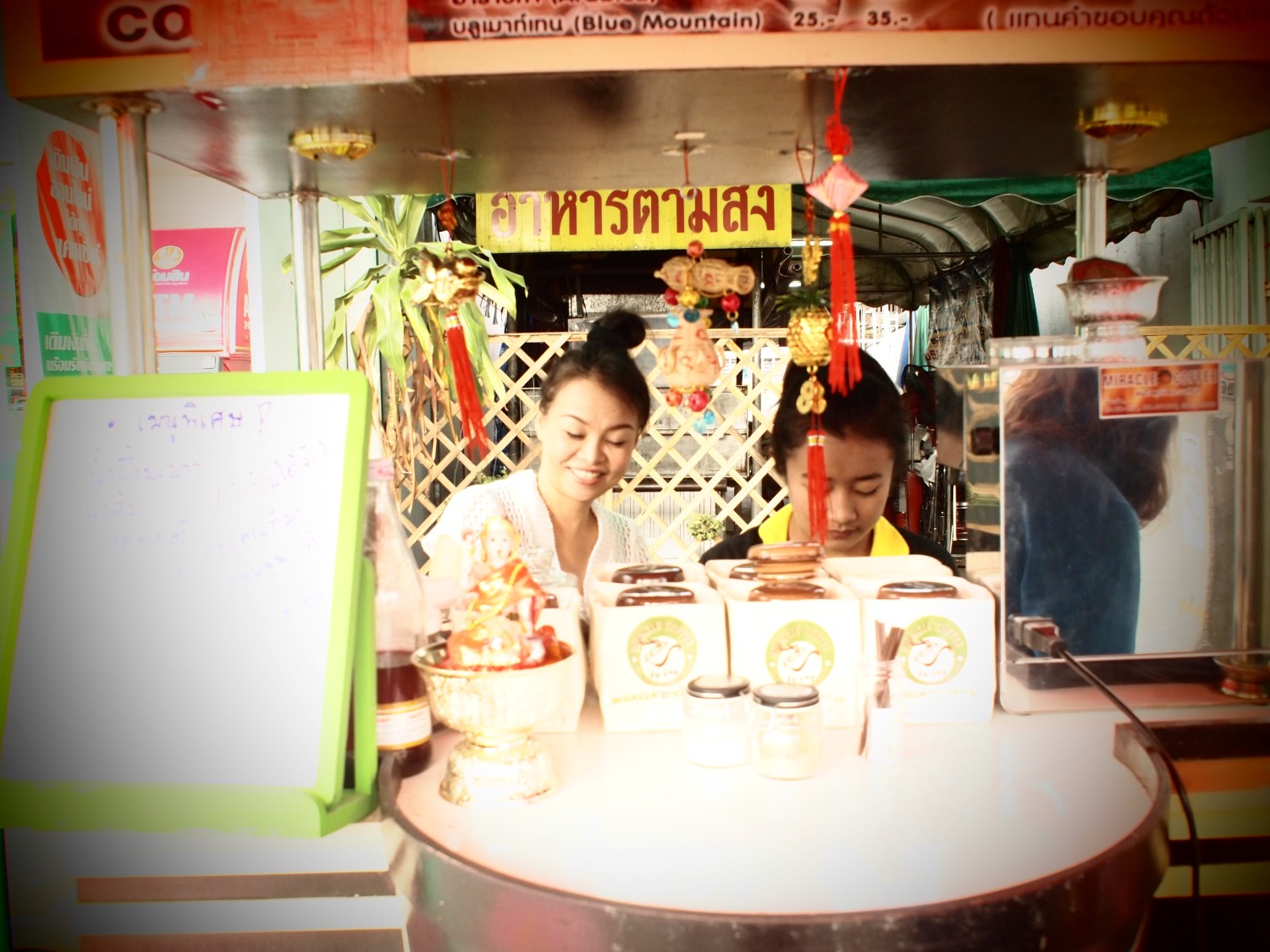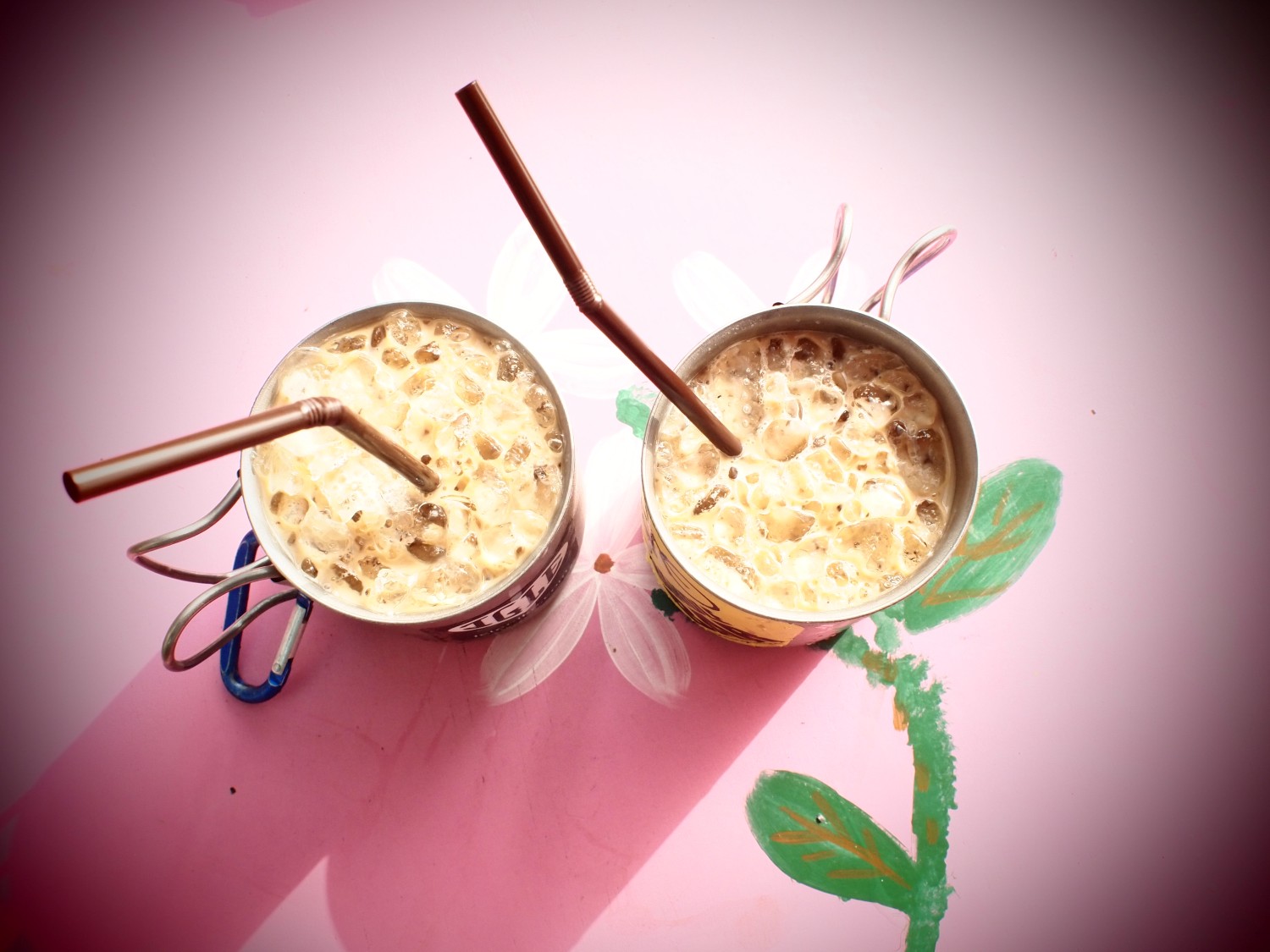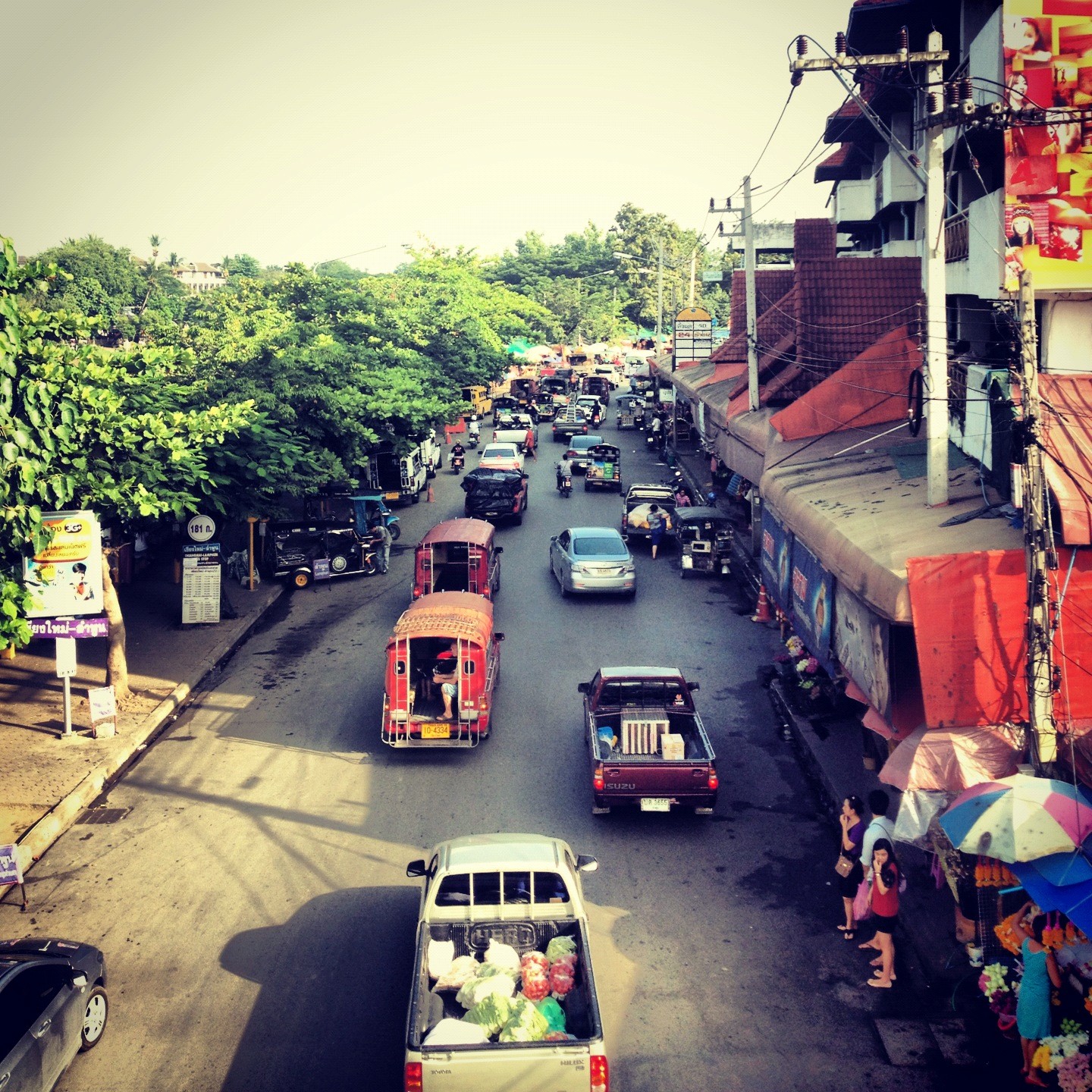If you're planning a Backroads Thailand Bike Tour, we'll be picking you up in the old Lanna Kingdom capital, Chiang Mai. We highly recommend you spend at least 24 hours in this beloved mountain city. But be careful--you may never want to leave. Chiang Mai, a massive city in northern Thailand, is a western expatriate haven. You'll walk the streets and feel quite at home here. It's one of those places that reels people in. Travelers come for a weekend and stay a week; a week turns to months and years. And soon enough people only leave to renew their visas and to reconnect with family. Why? You'll see... The following are a few suggestions for exploring this great city.
Mornings are magical in Thailand. Just a little cooler than usual and the light is just right. During the wee hours of the morning, the street vendors are out shopping for their day's worth of produce and herbs for their beloved stands. Grab your camera, put your walking shoes on, and head out for a walk before breakfast. Meander until you find a produce and meat market (you can ask your hotel concierge to point you to one, or you can try your luck just wandering--you're almost certain to just stumble upon a market.) Along the way, pick up a street side espresso to sip as you wander the aisles of fresh tropical fruit. Most coffee places in Chiang Mai will have an English menu, but if you would like to order your coffee in Thai, here's how:
"Ow nung gafe yen, ka (krup)" Ow= I would like
nung=one
gafe yen= iced coffee
ka= feminine version of please
krup= masculine version of please
With a little Thai phrasebook in hand to change up the vocabulary, you can actually use this formula for ordering most things in Thailand. After you've seen a morning fruit market, make your way to breakfast. A traditional Thai breakfast is a savory soup with rice. If you've strolled past street vendors during the morning hours they are most likely serving up this tasty soup. Be that as it may, not all of us are ready for chicken soup at 8:00am (I'm one of those people). And if you're with me, fear not, Chiang Mai has many other amazing options. The smoothie lady on Moon Muang Rd., Soi 6 offers up delicious fresh smoothies and bowls of yogurt and granola. Another great place to spend the morning is at Café Good Morning Chiang Mai (29/5 Rachamankha soi 6, 66-53-278-607); it's an artsy spot with a relaxing garden courtyard and a great place for fresh western style breakfast and espresso (the tropical banana pancakes are amazing). From here you have a few options for your day:
1. Head up the tallest mountain in Chiang Mai Province If you want a day of adventure outside the city, pack a lunch and head up Doi Suthep, the 5,498-foot mountain that overlooks the city. Visit the kings' winter hangout, Bhubing Palace, the mountaintop temple of Wat Phrathat Doi Suthep, a waterfall, or a coffee village. Scooters are cheap and easy to rent on almost every corner in the city and make for a fun adventure! Whichever way you climb the mountain, keep an eye out for the many Thai cyclists out for a day climb. There's a large cycling community in Chiang Mai, and mountain bikers and road riders alike pedal up this gargantuan hill every day. Sunrises and sunsets are also fantastic from the top of the mountain! 2. Take a Yoga Class If you're looking to lay low and experience the city but would like a little stretch before your week of Backroads adventures, I suggest looking at the yoga schedule at Wild Rose Yoga Studio (4/1 Phraproklao Rd.; 66-89-950-9377; http://www.wildroseyoga.org/). The studio lies in a hidden alley inside a beautiful wooden Lanna house. In a great ambiance, Californian expat, Rose, offers fantastic yoga classes. She's so welcoming, and she's also a great resource and will help you find anything in the city. 3. Take a Thai Cooking Class! If you don't take a cooking class before your Backroads trip, take one after. They're interactive and such a fun way to experience Thai culture. Not only will you tour a market and learn about all those odd looking fruits and vegetables, but you'll get recipes to take home, and you'll make yourself absolutely incredible food. When you take your cooking course, be sure to come hungry and pick a class that ends around lunchtime. That way you'll be hungry when it comes time to eat the massive meals you're going to make. And you'll see a more bountiful produce and meat market in the morning, as vendors start to dwindle later in the day.For carnivores and vegetarians alike, check out Air's Thai Culinary Kitchen (9/1 Nongprateep Rd; http://www.airthaikitchen.com). 4. Tour the oldest temple in the city See a great example of Lanna Architecture: Wat Chiang Man. This temple feels very different from other Thai temples due to its incredibly detailed woodwork. Whatever your focus, the one thing you shouldn't miss is a Thai massage (or two). As you walk the city you'll see--on every main street and alleyway--about a zillion places to get a massage. Many of the cheap places are fantastic. You'll pay a bit more for a spa experience, but it's likely to be palatial. When choosing a massage don't be scared of the classic Thai massage. I was a little apprehensive of Thai massage at first and went for the deep tissue oil massage, thinking it familiar. My massage was okay, but nothing fantastic. The next time I decided to give the Thai style a chance, and I'll never be the same. Most Thai masseuses understand easier, softer, less hard, more hard etc., so have no fear. The Thai people are world renowned for massage and for legitimate reason. Thai massage is amazing! My favorite spot for a massage is just outside Thapae Gate (the East Gate) of the Old City but is way off the tourist track. Loikroh Traditional Thai Massage and Yoga school is a peaceful campus and offers incredibly authentic Thai massage (http://www.loikrohmassage.com/). Massage therapists from all over the world come to this tiny school to be trained by the best Thai massage teachers, and you can get a massage from one of them! Make your reservation before you head to Thailand and ask for "Jang;" even if she's not available know that you cannot go wrong with any of the teachers. Before or after a massage at Loikroh you'll surely be enticed into one of the many high-end artisanal boutiques that lie just outside Thapae Gate. Wander the alleyways on this side of town and admire the indigenous art and local handicrafts. The leather goods in these boutiques are breathtaking and well-priced.
For dinner you are going to have too many options. For some fantastic street food, the food carts just outside the north gate are awesome, always busy and full of Thais. The city, however, is full of amazing street food, so use this rule of thumb: if a place looks busy and the tables are full of smiley Thai people, the food is probably awesome. For something vegetarian check out Imm Aim Vegetarian & Bike Café located outside the northwest corner of the old city (10 Santitham Rd.; 66-89-264-5511). This spot is a favorite for local Thai foodies and sustainability activists. It has a fabulous ambiance and offers organic Thai fusion: great salads, delicious vegetarian style Thai dishes and amazing smoothies. After dinner cruise the Night Bazaar for an unforgettable shopping experience (Chang Khlan; 7pm-midnight). Here, in this massive market full of never ending rows of pop-up shops, everything is on sale: from spices to souvenir t-shirts and everything in between. The market is colorful but overwhelmingly huge, so if your feet are feeling tired from a day of adventures in this fabulous city, perhaps a foot massage is the best way to spend the last moments of the evening. Massage chairs will surely line the streets tempting you to rest for a moment. After a relaxing foot massage, maybe jump in the back of one of those pedi-cabs to get home.








